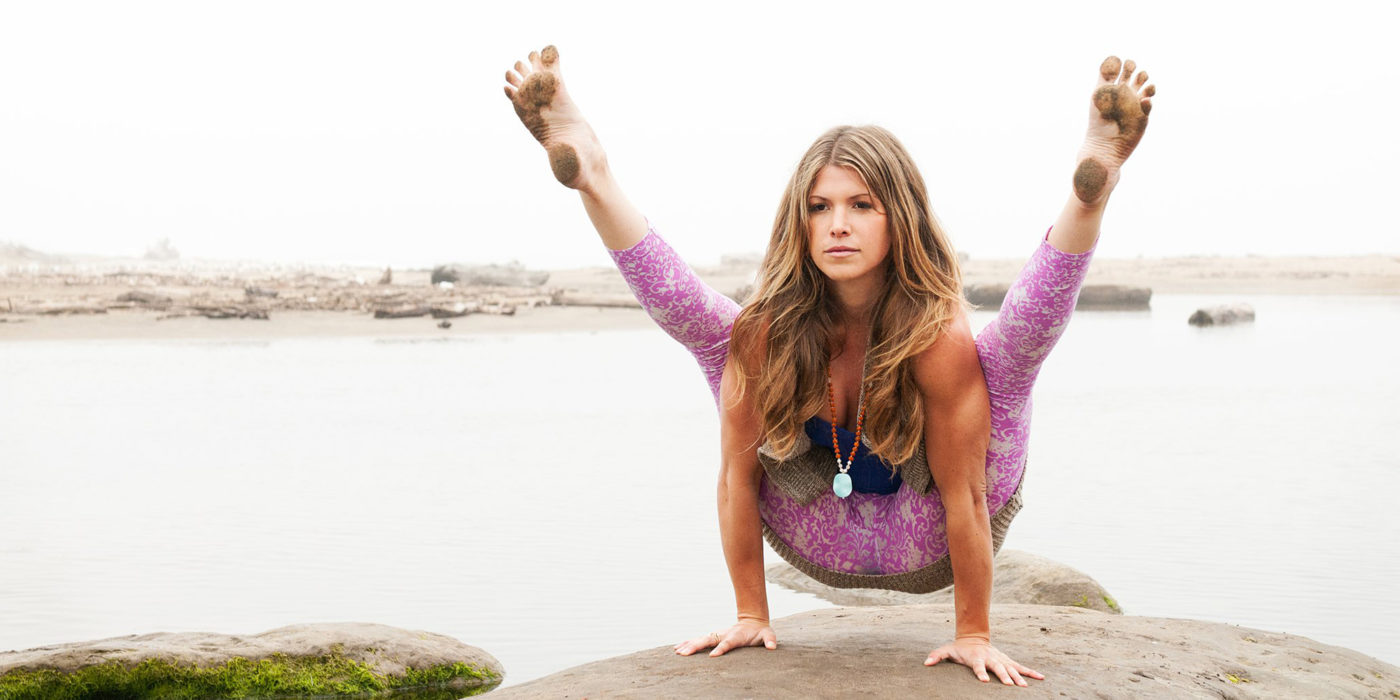Parvati Magazine’s yoga editor Ella Isakov interviewed the dedicated, forthright and passionate yoga teacher Alexandria Crow, who shared wisdom on how to stay committed to truth and integrity in the yoga community.
Parvati Magazine: As a former gymnast, you saw similarities in the physical demands, but the practices are completely different. What gift has yoga given you that was missing in gymnastics?
Alexandria Crow: Yoga gave me the ability to accept things as they are without the need to chase perfection. I was great at enduring pain in gymnastics so I could get out there and do what was needed. I wasn’t however, very good at looking flawed, at falling down, and my ability to ignore pain was a problem. The physical practice of asana was something I was great at in many ways and the parts I was missing could only be learned when I wasn’t able to do a physical practice due to injury. I had to give up doing the asana practice to actually establish a yoga practice at a deeper level.
PMAG: You are a yoga rebel within the yoga community. How has yoga influenced your thought processes & feelings to get you to this place in your life?
AC: I have a critical thinking mind that just doesn’t buy into a lot of stuff. I was always this way but my yoga practice has definitely amplified my self-acceptance and critical thinking skills making it even easier to speak out honestly. I gained some popularity for my teaching as well as my physical yoga-asana abilities but I knew I would never be liked by everyone. I was able to do what I thought was wise and effective as a teacher, even if it wasn’t popular. I never felt locked in to a certain way or a certain style, I always let it morph and change. It allowed me to say what I think about what I see going on in the yoga world at large.
PMAG: How do you bring forth self-reflection in your teachings that allows for external observation and change within your students?
AC: It comes from the way I structure my classes. I don’t think of them as having sequences or that the poses are the point or that classic shapes have to be taught. I do not think about the pose, I look at the changes at joints and what could be gained or lost. It’s my job to educate students how to achieve joint changes in a pose with stability in their musculature and how to customize the positioning and efforts to suit their bodies. This way students are incredibly engaged in the present moment with the function and sensation of their bodies which allows them to take the lesson and apply it to their unique structure with wisdom. Then the entire room is working on what is wise for them individually so there’s no need to worry about uniformity or conformity.
PMAG: You created a teacher training/mentorship program called “Yoga Physics”; what makes this training unique?
AC: I don’t teach a particular style or way of sequencing. I teach straight up bio-mechanics as it relates to the most commonly taught postures as well as adaptations for personal structure and range limitation or hyper-mobility.
I don’t teach you what to say. I teach the whys behind everything physical and philosophical then it is up to each individual teacher’s style and personality to articulate it in their own way.
I make you question everything and I ask “why?” a lot. Everything must be investigated so that the lesson comes through with absolute clarity. It’s confrontational but it creates intelligent, self-aware, unique teachers.
PMAG: What advice do you have for young yoga teachers starting out in this business to stay true to their beliefs?
AC: Never compromise on what you know to be true. There may be less jobs initially and less students on the front end but it will mean you are respected and have dedicated and lasting students later. Be bold, be you, never stop investigating and learning.












